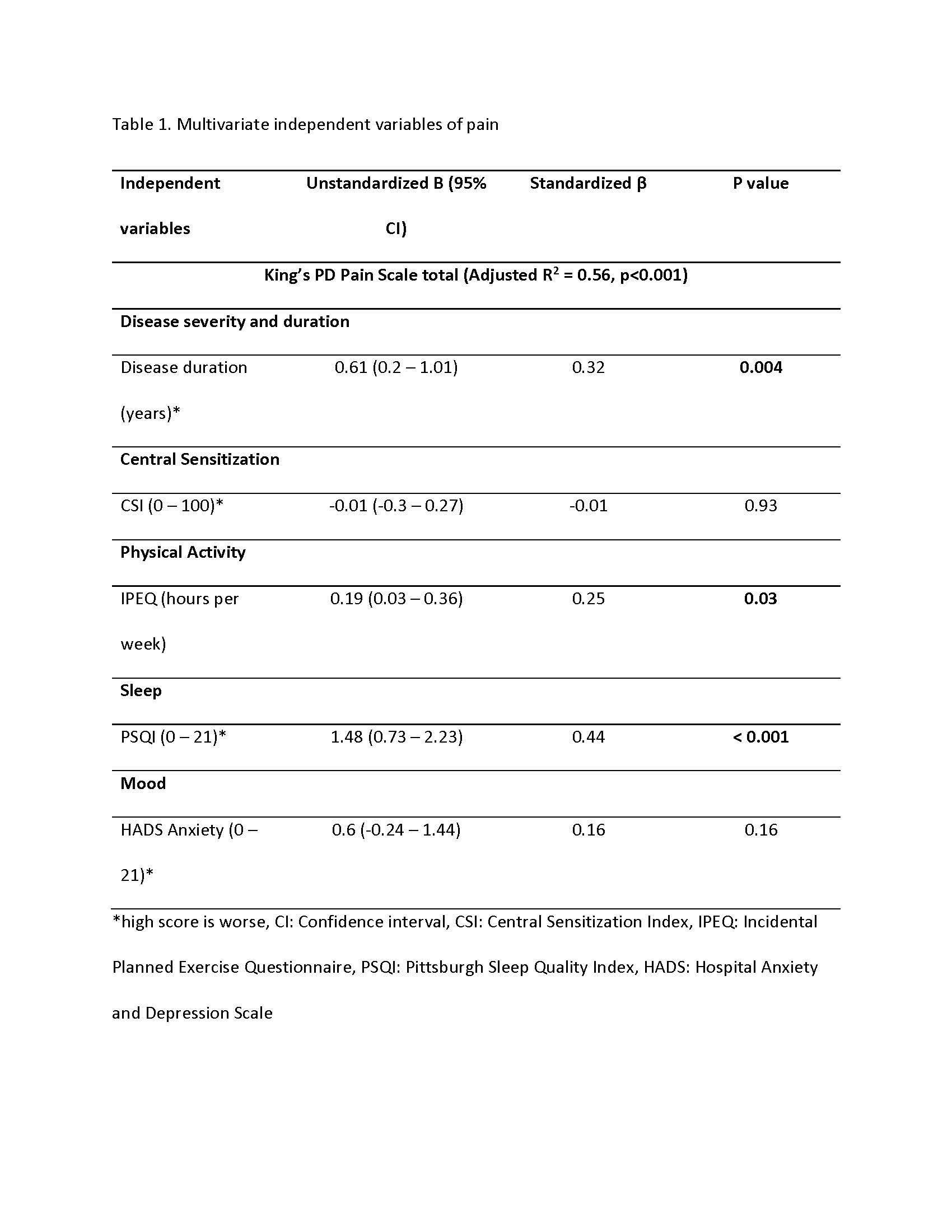Category: Parkinson's Disease: Non-Motor Symptoms
Objective: This cross-sectional observational study explored the relationships between measures of physical activity, sleep and mood with pain in people with Parkinson’s disease (PD).
Background: Pain is common in PD with up to 85% of people affected. Despite this high prevalance, pain is poorly understood in this population and current management is based largely on expert opinion. In general and chronic pain populations, physical inactivity, poor sleep and anxiety are associated with worse pain. However, little is known about these potential predictors of pain in people with PD.
Method: Pain was measured using the King’s Parkinson’s Disease Pain Scale and the Brief Pain Inventory (pain severity and interference scales) in 52 participants with PD. Independent variables were categorised by demographics (age, gender), disease severity (Movement Disorders Society Unified Parkinson’s Disease Rating Scale) and duration, central sensitisation (Central Sensitisation Inventory), physical activity (Incidental and Planned Exercise Questionnaire), sleep (Pittsburgh Sleep Quality Index) or mood (Hospital Anxiety and Depression Scale). Relationships between independent variables and pain were explored using univariate and multivariate linear regression models.
Results: Univariate regression analyses revealed that increased disease severity, longer disease duration, higher central sensitization scores, increased physical activity, impaired sleep and mood were associated with increased pain in one or more pain measures (p < 0.05). In the multivariate models the adjusted R2 was 0.25 for the pain severity model, 0.36 for the pain interference model and 0.56 for the King’s Pain Scale model [table 1]. Impaired sleep made an independent contribution to increased pain scores in all models (p < 0.05).
Conclusion: Increased physical activity, impaired sleep, anxiety and depression are associated with worse scores on pain scales in people with Parkinson’s disease. Further research is required to better understand the relationship between physical activity and pain and to assess if treating altered sleep and mood will improve pain symptoms in people with Parkinson’s disease.
To cite this abstract in AMA style:
V. Nguy, B. Barry, N. Moloney, L. Hassett, C. Canning, S. Lewis, N. Allen. An investigation of the relationships between measures of pain, physical activity levels, sleep quality and mood in people with Parkinson’s disease [abstract]. Mov Disord. 2020; 35 (suppl 1). https://www.mdsabstracts.org/abstract/an-investigation-of-the-relationships-between-measures-of-pain-physical-activity-levels-sleep-quality-and-mood-in-people-with-parkinsons-disease/. Accessed April 28, 2025.« Back to MDS Virtual Congress 2020
MDS Abstracts - https://www.mdsabstracts.org/abstract/an-investigation-of-the-relationships-between-measures-of-pain-physical-activity-levels-sleep-quality-and-mood-in-people-with-parkinsons-disease/

